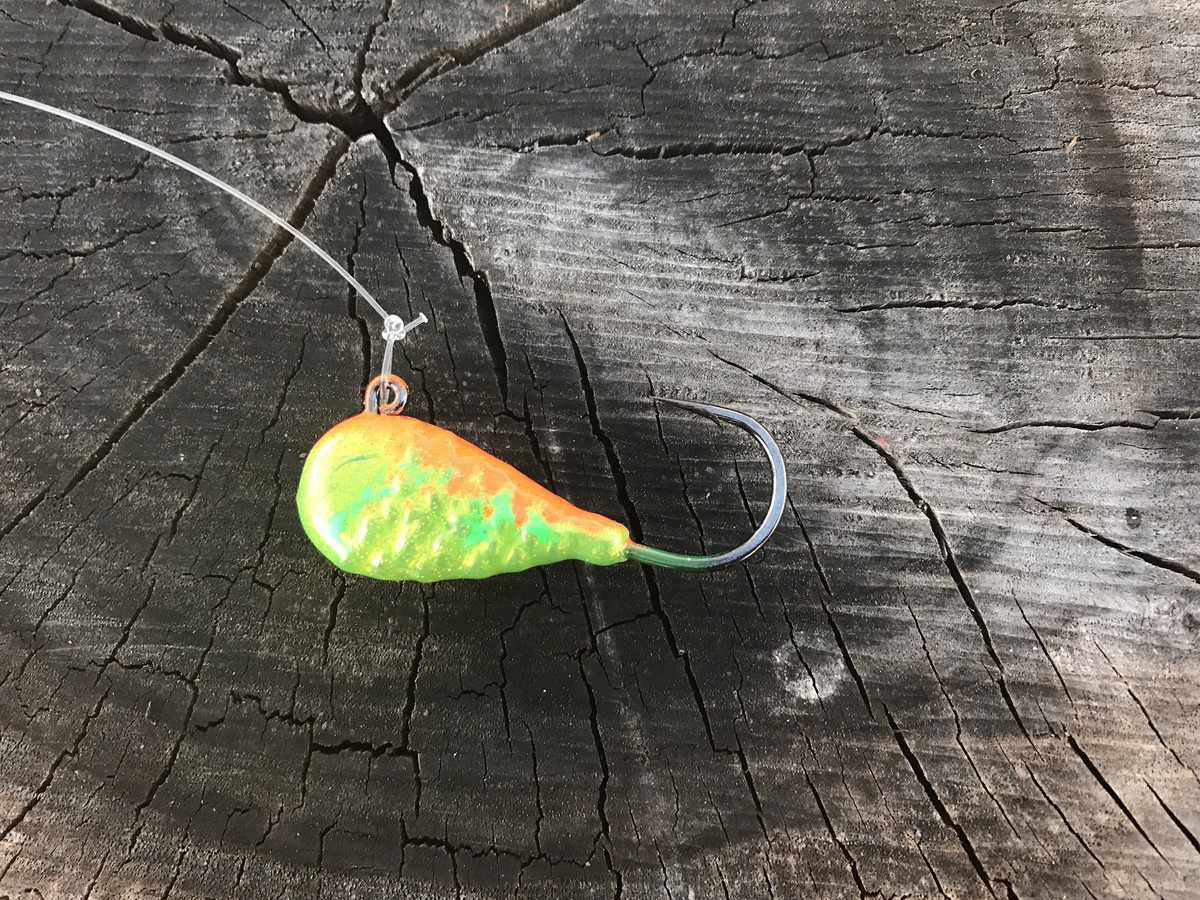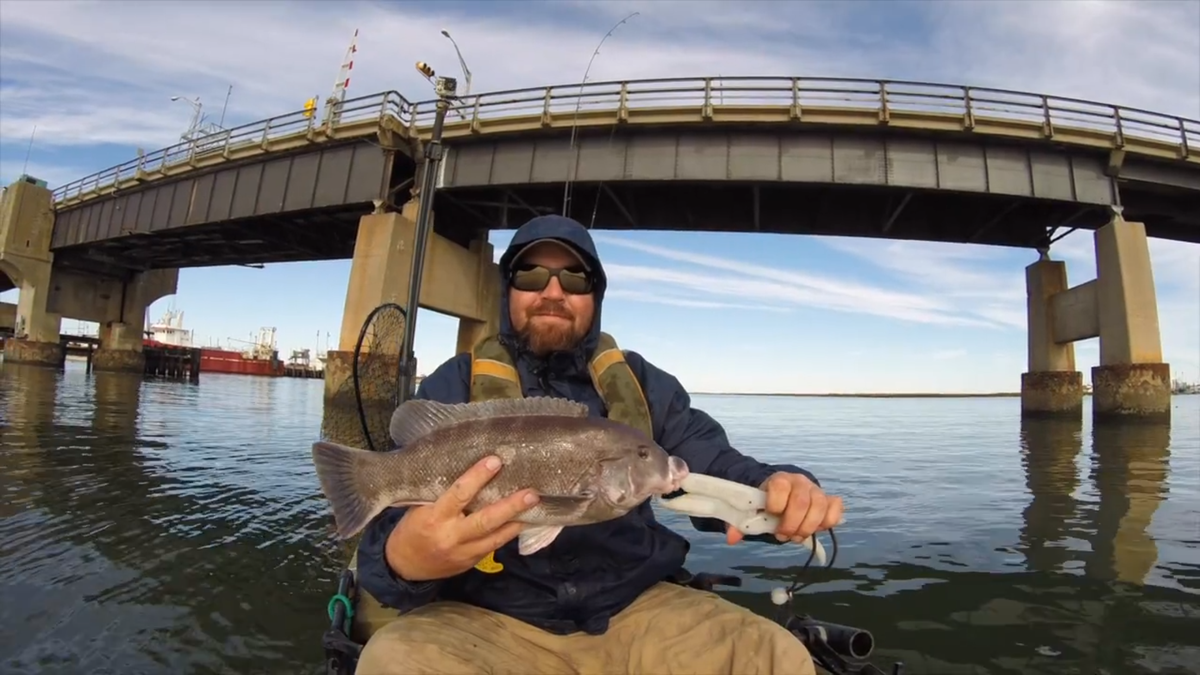
An old timer told me once, “If you’re not getting snagged, you’re fishing in the wrong place.”
Patience and preparation are two things that go a long way to become a successful tautog fisherman. A little bit of preparation, and a whole lot of patience. That same old timer also told me, “If you can catch a tautog, you can catch anything.”
I sure hope he was right.
Tautog, a member of the wrasse family, are great fighters with a delicate bite and a powerful tail fin. Sensing the bite and being prepared for what happens after the hookset can come with a little bit of a learning curve. Tautog are my favorite species to target and they go absolutely nuts when hooked. Several short powerful runs back toward structure can be expected out of a 2 pounder.
Plying the hard structure for togs is tough work, but Hobie Top Gun Charles Breon makes it look…well, if not easy, at least FUN! #hobiekayakfishing
Posted by Hobie Fishing on Friday, March 31, 2017
Fish in the 5-pound plus range can test light tackle to the breaking point. The popping sound of the guides on a conventional style rod as it rolls over are a sure sign you’ve hooked a donkey.
Tautogs’ natural habitat of steep sod banks and natural rock structures have given way to bridges and rock piles in modern times. This gives kayak anglers a great opportunity to target this voracious species. Ease of access to good fishing grounds makes them easy to get to. There’s a bridge over just about every body of water and in my hometown of Cape May, New Jersey, you can’t go anywhere without crossing one.
In the early spring and fall, I like to target these fish about an hour before, during, and after the high and low tides. I find the best bite occurs about an hour after sunrise on a high tide. The slower moving water makes the presentation of your bait much more effective. Initially I begin with a 1 1/2-ounce TidalTails Blackfish jig. The flat jighead allows it to be less likely to snag on structure pinch points and they also cut through the current better to get that straight up and down presentation that I find important. I target and catch fish as shallow as 10 feet deep and as deep as 45 feet. Getting up close to an inshore structure is ideal for presentation, using the MirageDrive to stay up tight to the bridge piling while dropping your line straight down.

Bait of choice are small crabs, mostly green crabs, and fiddler crabs. Shrimp, conch and clams will produce as well. Premium bait would be white legger crabs and Asian crabs that can be collected by seasoned tautog hunters under the rocks along tidal shore lines.
I prepare the bait by using heavy scissors to remove all the crab’s legs and then halve the crab down the middle. Put the hook in one leg socket and out another. When the bite is good I’ll switch to whole crabs to weed out the smaller fish. Don’t get discouraged if you don’t catch fish immediately as it can take a while to get them turned on. A few handfuls of crab parts tossed overboard can help with that.
Once the fish start to eat you can really start a frenzy and catch fish one after the other. A good day sees the bite remain hot long after the tide starts to rip. Keeping baits on the bottom will keep the bite going and is the key to a full stringer.

The new MirageDrive 180’s reverse is key to getting backed out into open water after a fish is hooked to avoid snags and break-offs. As the tide slows I’ll gradually use smaller jigs, with 1/2-ounce being about the smallest. I attach the jig to a 30-pound braid mainline via 6 feet of fluorocarbon leader with a basic loop knot. The fluorocarbon maintains sensitivity while giving some good abrasion resistance. The loop knot on the jighead allows it to move freely with just a little bit of a jigging action.

When I say a little bit of jigging action I mean a little. I like to think of it more like making the jighead dance on the bottom and around structure. This action allows you to feel structure to avoid snags and also help feel the bite. When a bite is detected a slow lift of the rod will indicate that it’s time for a heavy hook set. If a hookset proves unsuccessful, dropping the bait right back down most of the time will produce, but don’t wait too long as they are master thieves. Pliers are a must for hook removal as tautog have thick fleshy lips and molar like teeth capable of crushing shellfish.
Rod and reel of choice for me has come down to 6-foot baitcaster, medium weight combos with as sensitive a tip as possible. The shorter rod allows for maneuverability in close to bridges and pilings and also gives you room for a short sharp hookset. This is not the time to bring out your high dollar gear. Whatever you use is gonna take a beating so I prefer to use an older setup or your basic bass fishing combo. I don’t feel the drag setting is too important. If a keeper size tautog gets the best of your reel he’s as good as a free man so a hard-cranking reel is a must. Speaking of beatings, your kayak is gonna leave with a few scars too, but that just adds to its character.

Tautog make for excellent table fare and can be cooked up several ways. My favorite is battered and fried for Tautog tacos.
Underwater and overhead structures can be dangerous as is passing boat traffic. Always wear your PFD. A safety flag/light is also recommended to keep you more visible to boats. Fishing up-tight to a structure presents a challenge and keeping your head on a swivel is a must to fish safely.
Bonus Skill: If a fish gets you snagged up, put your reel in free spool and take a breath. Most of the time if you give a fish some slack he’ll wander back out into the open. Give the fish a solid 30 seconds and try putting pressure back on again. If that doesn’t free you up, give it some more time. This could take several attempts but I’ve caught nice tautog 10 minutes after getting snagged up.
Check back weekly for new videos and stories by the Hobie Fishing Top Guns.